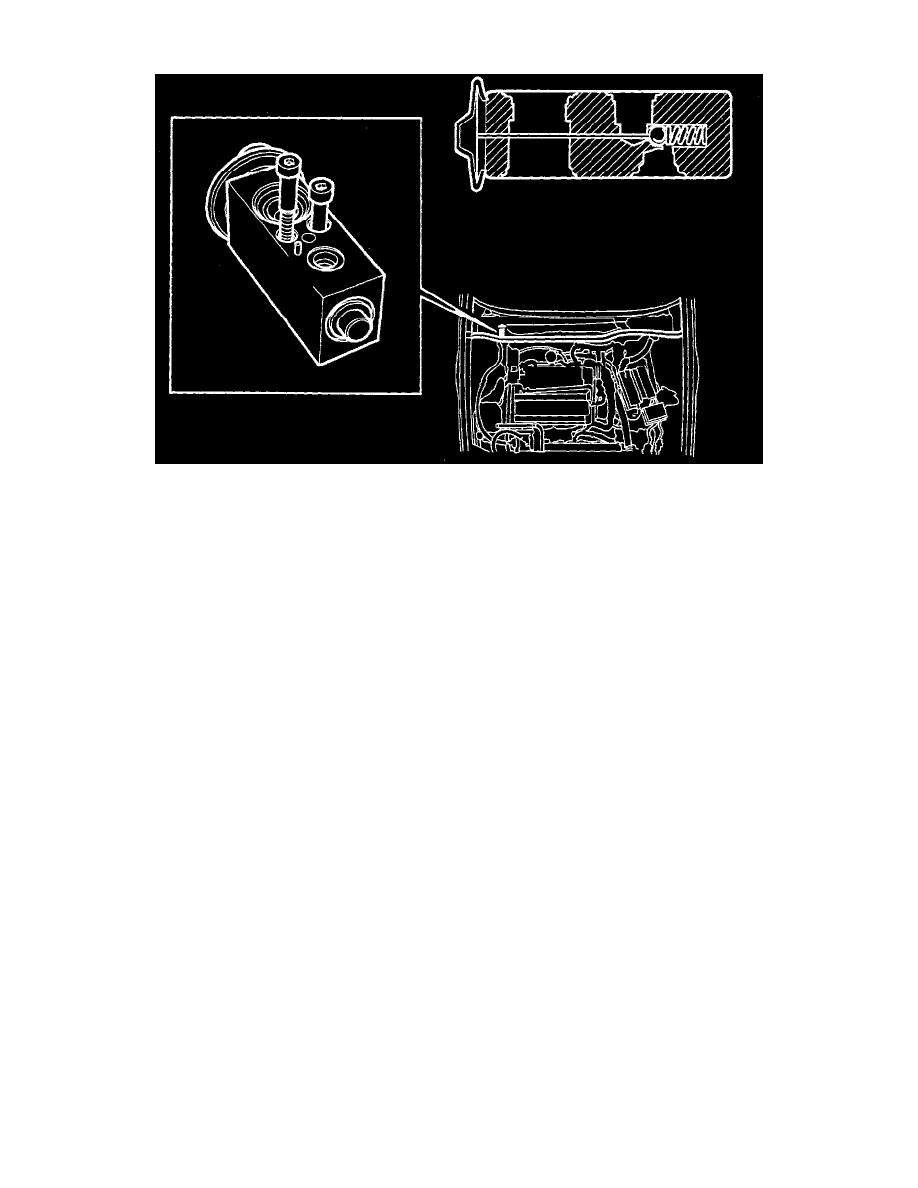9000 L4-1985cc 2.0L DOHC (1986)

Expansion Valve: Description and Operation
Expansion Valve
The refrigerant which comes into the expansion valve is liquid, at high pressure and high temperature. The function of the expansion valve is to
control the quantity of refrigerant which is sprayed into the evaporator. The valve does not let in more refrigerant than that quantity which can be
evaporated at any particular time.
In order for the expansion valve to be able to let through the exact quantity of refrigerant, there is temperature sensor and a capillary tube. Control
is regulated by the temperature in the expansion valve temperature sensor.
Depending on temperature, and therefore pressure, in the evaporator outlet, a certain pressure is transferred to the upper side of the diaphragm.
The pressure in the evaporator outlet pipe actuates the underside of the diaphragm (pressure transferred via capillary tube). The diaphragm then,
via a washer and pushrod, actuates the valve which controls the quantity of refrigerant to the evaporator.
If too much refrigerant is released into the evaporator, it cannot all be evaporated, which may lead to poor cooling. In addition, the compressor
may be damaged due to liquid refrigerant being sucked in (fluid stroke). If too little refrigerant comes in, the refrigerant is evaporated too early,
which may also give poor cooling.
